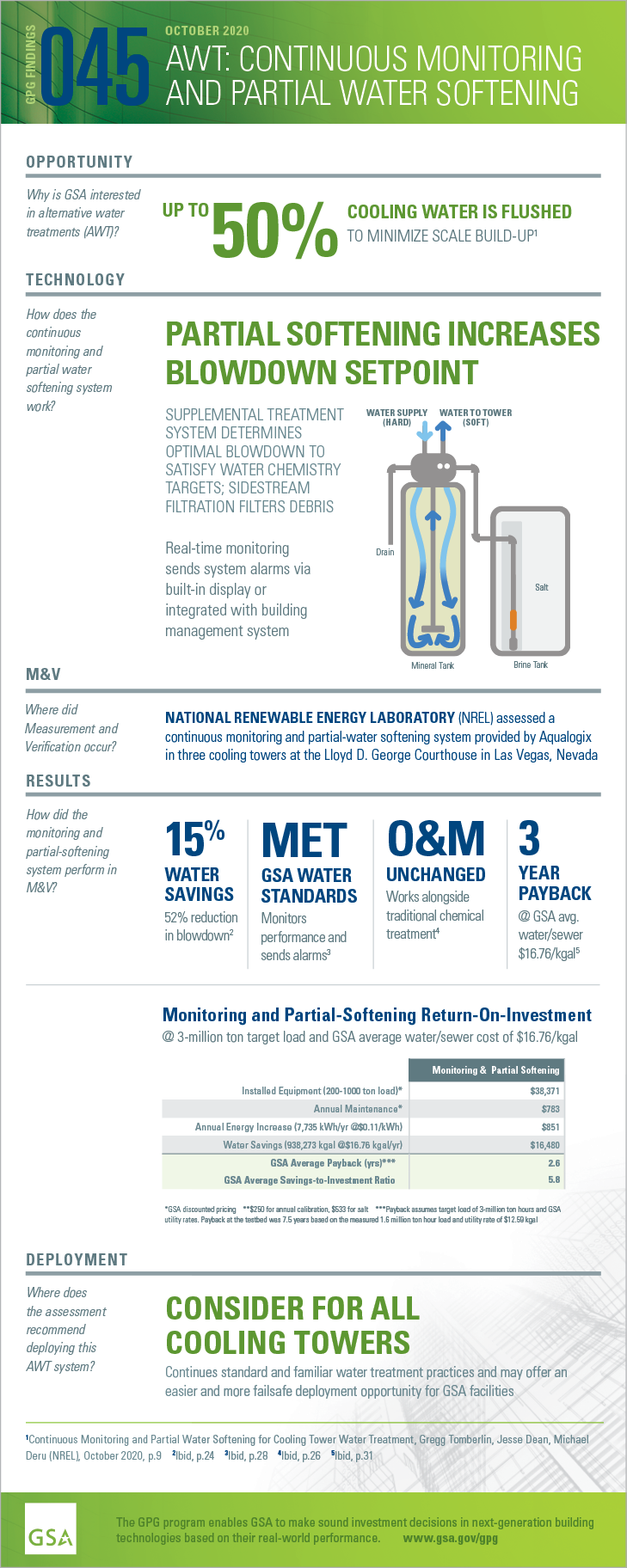AWT: Monitoring & Partial Softening
Cooling towers create some of the larger potable water loads in commercial office buildings. Up to 50% is regularly flushed or blown down to minimize scale build up.
The National Renewable Energy Laboratory (NREL) tested a supplemental water treatment system that determines the optimal blowdown to satisfy water chemistry limits. Researchers found that the system saved 15% water. View full-size infographic. [PDF - 235 KB]
Reference above to any specific commercial product, process or service does not constitute or imply its endorsement, recommendation or favoring by the U.S. government or any agency thereof.
WEBINAR
Last updated: Jun 29, 2023
Top

 U.S. General Services Administration
U.S. General Services Administration
